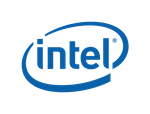Host
W3C gratefully acknowledges Intel Open Source Technology Center for hosting this workshop.

Sponsors


If you're interested in being a sponsor for a future workshop, please contact J. Alan Bird at abird@w3.org or +1 617 253 7823. For additional information, please visit the Sponsorship program.
Topics for the Workshop
The Program Committee will be looking at these topics as the top five for the Workshop:
- Putting safety first
- Relationship between the car and the mobile phone
- Creating markets for automotive applications
- Improving quality and reducing costs through Web technologies
- Unique opportunities for the automotive user experience
Other hot topics under consideration include:
- Accessibility
- Accessibility of the Web matters in automotive technology.
- Opportunities to improve access by all people, everywhere,
including those with physical, auditory, cognitive,
neurological, speech, or visual disability.
- Advertising
- Opportunities for context based advertising in the car.
- Browser-based Applications
- Execution models for applications, e.g. foreground applications and background services, smart notifications, and the interface with the context manager.
- The role of trusted applications in relation to API design.
- The role of docked smart phones and technologies like MirrorLink.
- HTML5 profiling for automotive, especially new user interfaces.
- New automotive-specific requirements for HTML5.
- Driver Distraction and Situational Awareness
- Boosting driver awareness of current and upcoming conditions.
- Minimising distractions in safety critical situations.
- Reducing the effort needed to recognize and act upon notifications.
- Networking and Web Management
- Support for intermittent access to the network.
- Enabling other third party devices to be context aware and connect to the car.
- Machine to Machine (M2M) communication, e.g. for upcoming hazards
- Synchronization with other devices, e.g. on home networks.
- Extending the web run-time to cope with novel input and output mechanisms.
- Monetization of services and vendor neutral payment solutions.
- Security, Privacy and Trust
- Requirements and design patterns for security, privacy and trust.
- Signed applications for installed and remotely hosted applications.
- Personalization, Interoperability and Interactivity
- User preferences, e.g. when a car is shared by different
people or family members.
- Use cases and requirements for context awareness.
- Vocal and multi-modal user interfaces, combining local and remote speech processing.
- User preferences, e.g. when a car is shared by different
people or family members.
![[Web and Automotive] Shift Into High Gear on the Web; W3C Workshop; 14-15 November 2012, Rome, Italy](webauto-banner1.jpg)